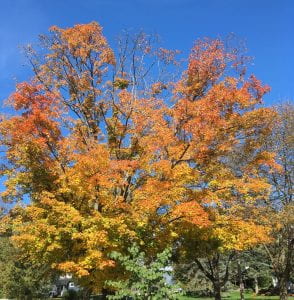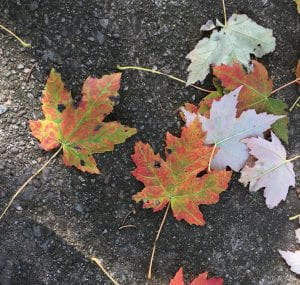
If you have been procrastinating on your fall garden clean-up (like me), I’ve got good news for you! You may want to just erase some of those tasks from your to-do list altogether. And you can do it guilt-free!
As you may recall from my post this spring, a messy garden provides good shelter for friendly insects like pollinators and natural enemies of pests over the winter. Whether it’s leaves on the ground or dead plant stems, it’s not a bad idea to leave at least some debris in your yard and garden. The Xerces Society provides a nice summary of the benefits fallen leaves offer to insects and other creatures. You can read an eloquent description of all the benefits of a messy yard here.
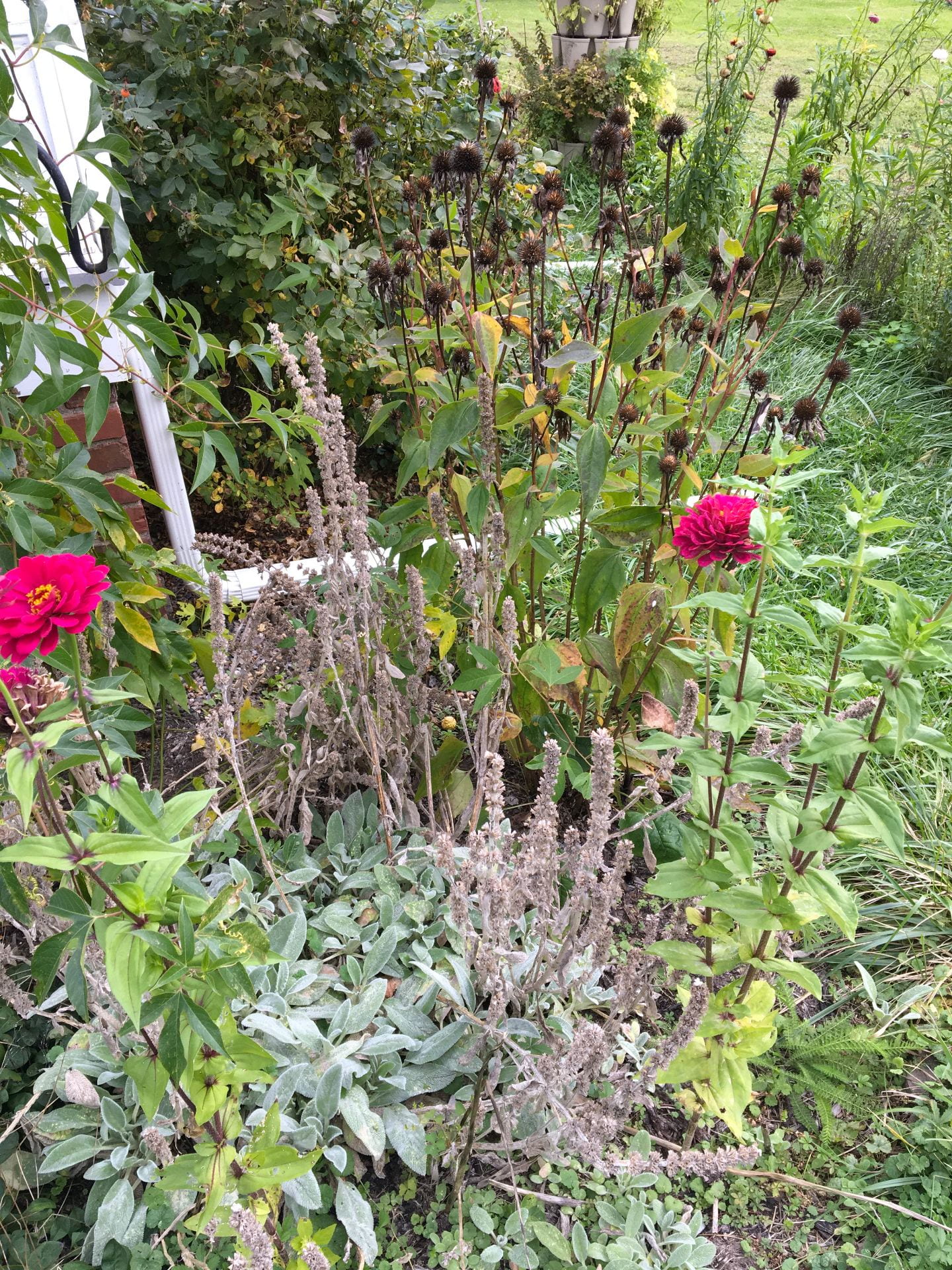
Just to prove I’m putting my money where my mouth is, here are some pictures from my own yard. I’m thinking about cutting down the sunflower stalks and propping them up next to my compost bin in the back yard, just to make things a little tidier in the front yard.
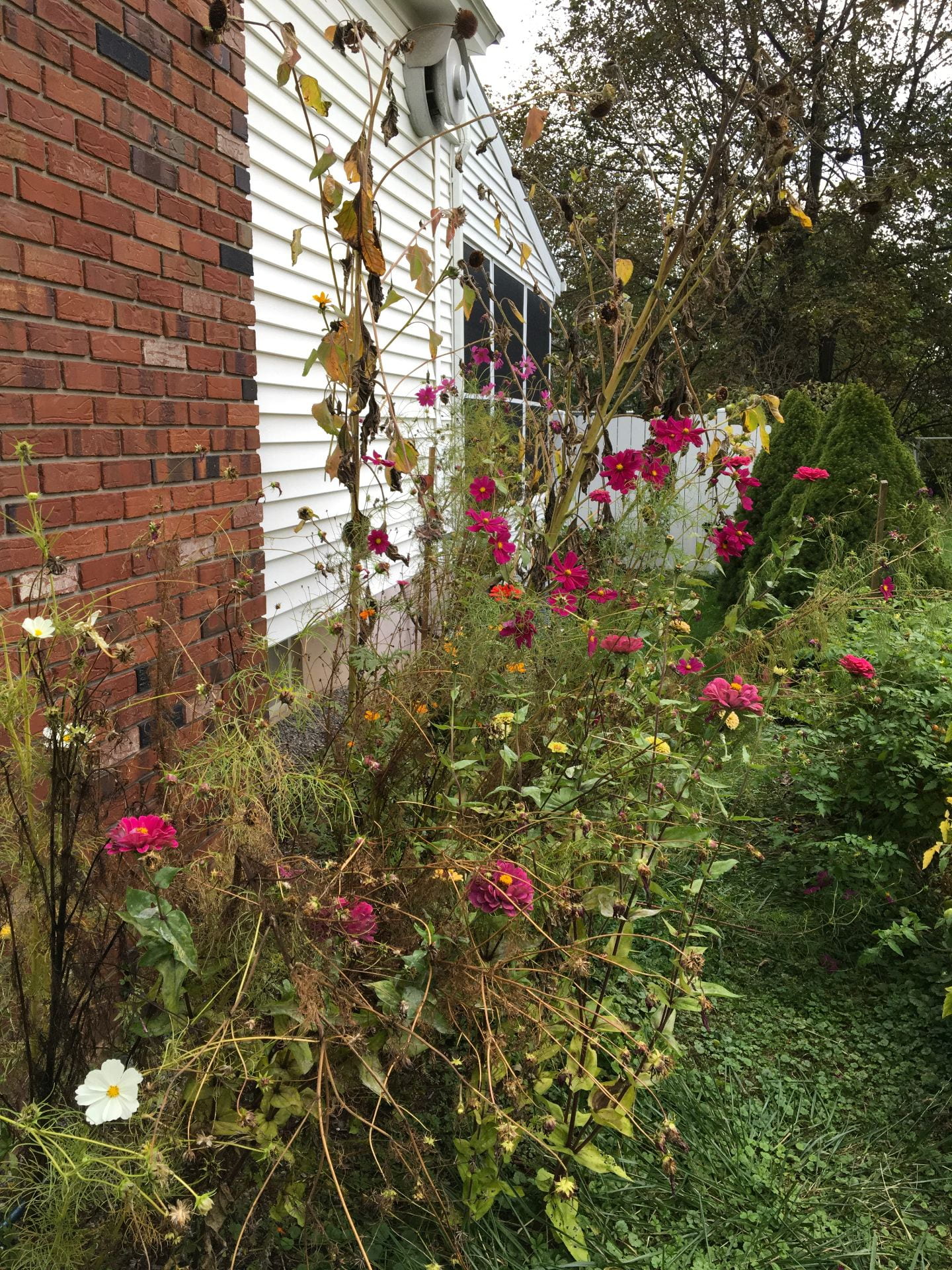
I’m going to still take out (and send to my local municipal compost facility) my vegetable plants (tomatoes and peppers). Leaving dead stems from healthy plants in your garden is one thing, but this year’s vegetable plants can harbor next year’s vegetable diseases and insect pests if left over the winter. Disposing of diseased or insect-infested plants away from your garden is just good IPM.
A few more caveats…
First, you should know that ticks complicate the simple advice to “leave the leaves”. If you’ve had problems with ticks in your yard (learn how to monitor for ticks here), be strategic about where you leave things messy, and where you clean them up. For example, consider cleaning up areas where your family and pets spend more time. You should also be careful about where you pile leaves. My co-worker Joellen explains why here. And definitely use other IPM strategies to protect yourself from ticks, regardless of your yard clean-up plans.
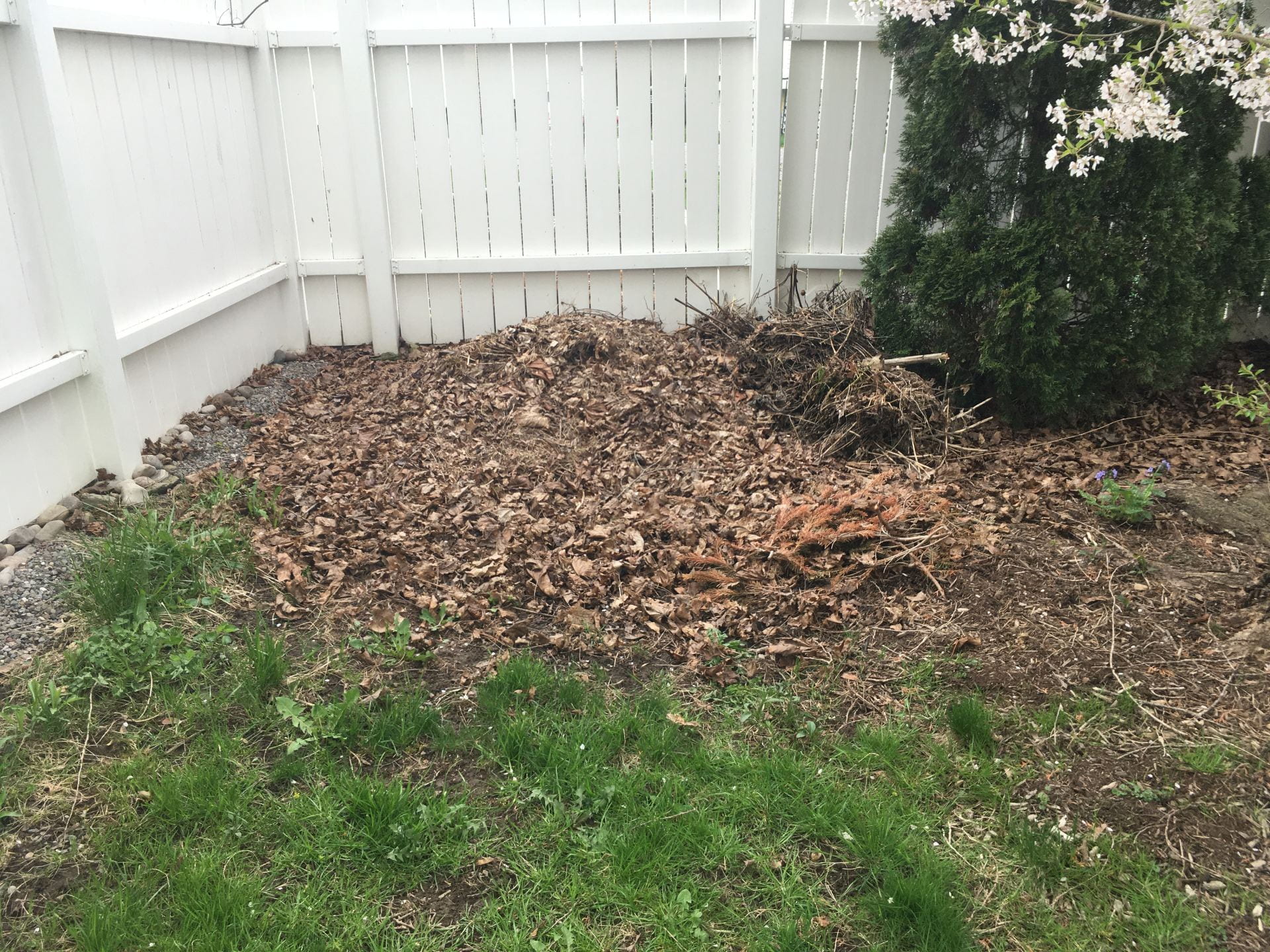
Second, if you’ve got a garden bed in the front yard that you just can’t stand to leave messy through the winter, it’s ok to clean it up and not feel guilty. Maybe pick another part of your yard that you can leave a bit messy instead. Don’t let the perfect become the enemy of the good.
Happy Fall!
This post was written by Amara Dunn, Biocontrol Specialist with the NYSIPM program. All images are hers, unless otherwise noted.
This work is supported by:
- New York State Department of Agriculture and Markets
- New York State Department of Environmental Conservation

